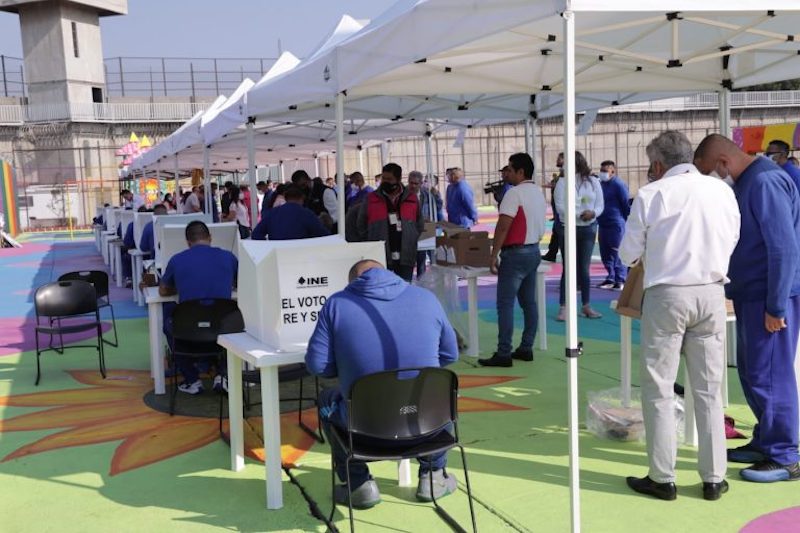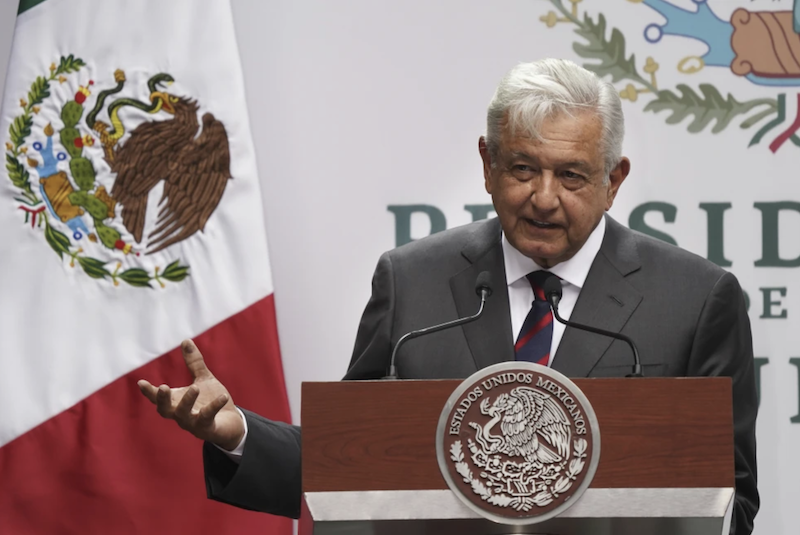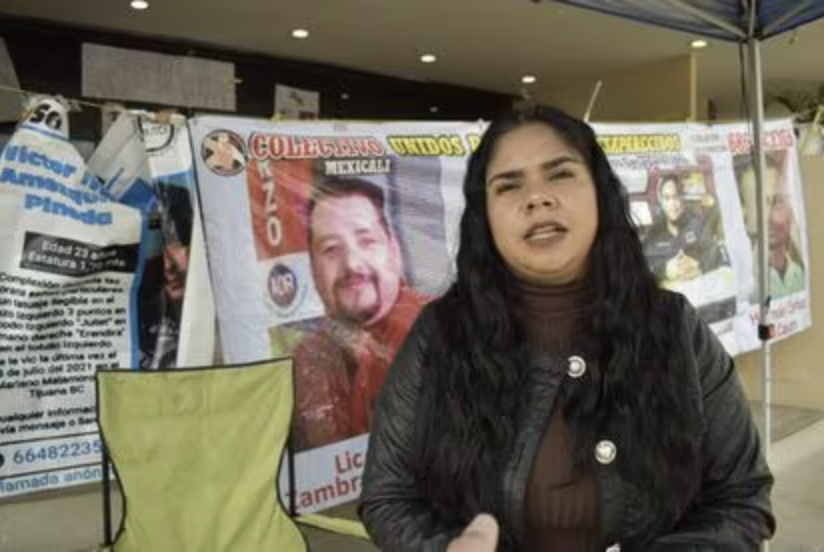07/09/20 (written by jhale) – For many Mexicans weary of crooked politicians and dangerous city streets, Andrés Manuel López Obrador (or AMLO, as he is colloquially known) offered a glimmer of hope. An outspoken opponent of government corruption, the populist diplomat sought to overhaul the federal policing system and replace it with the National Guard (Guardia Nacional). This dramatic change represented the beginning of a broad shift in the systems and structure of Mexican law enforcement under the current administration. The National Guard, unlike the Federal Police, was intended to be effective at stopping crime and resistant to corruption. In the year since deployments began on June 30, 2019, pundits have sought to determine whether the organization has fulfilled AMLO’s initial promise to address the problems plaguing Mexican society.
Implementation and initial reactions
With the catchy slogan “abrazos, no balazos” (hugs, not gunshots), AMLO sought to institute a system of policing that represented citizens, not government interests (Belmont). In AMLO’s view, the police were incompetent and corrupt, while the military was heavy-handed and violent. The National Guard was designed to bridge the gap between the two. A constitutional referendum to create and implement the National Guard passed both houses of Congress with little resistance (Semple and Villegas). The plan does not immediately recuse the military of its public security duties, but rather designates a five-year transition period for the Guard’s implementation. At present, the National Guard has swelled to a force of over 100,000 troops drawn from the ranks of the military and the defunct Federal Police force (Espino).
Under pressure from the United States and the Mexican public, AMLO has deployed the National Guard to the country’s southern border. U.S. president Donald Trump has threatened to stamp tariffs on Mexican exports unless Mexico acts to mitigate the perceived threat of Central American migrants and drugs flowing northward. Mexican citizens have also expressed apathy towards migrants, with 51% supporting the use of the National Guard to enforce border crossings, according to a 2019 survey (Clement and Sieff). However, some have accused the Mexican head of state of giving in to Donald Trump’s demands and using migrants as a scapegoat for deeper societal problems. Others have claimed that the Guard’s deployment to the border distracts from its failure to address issues such as rising crime rates or drug trafficking.
Critics warn of the militarization of law enforcement
Another criticism leveled against the National Guard is that it lacks the community-serving ethos of a competent police force. Critics note that, in practice, a police force should protect a community and establish close relationships with its members. Some believe the presence of the heavily armed National Guard can be intimidating, fostering a climate of fear rather than safety (“Guardia Nacional, Cada Vez Más Militar”). However, AMLO has defended a militarized approach, encouraging collaboration between the military and the National Guard on national security projects. The Mexican president has vouched for the military’s professionalism, expressing a desire to avoid the mistakes that led to the dismantling of the Federal Police (Villa y Caña and Morales). In its first year, the National Guard has struggled with an identity crisis as it seeks to define its role in law enforcement.
AMLO’s recent rhetoric has been met with strong pushback from Congress. In May, the Party of the Democratic Revolution (Partido de la Revolución Democrática, PRD) presented an official complaint regarding the militarization of public safety. The complaint was submitted to Mexico’s National Commission of Human Rights (Comisión Nacional de Derechos Humanos, CNDH) and asserts that civil security should be carried out by civilian groups, not the military. The PRD contends that if Mexico continues to normalize the use of heavily-armed security forces to enforce the law, human rights violations will go unchecked. Furthermore, pundits point out that the constitutional provision that created the National Guard last year did so to create a force that would eventually replace the military in enforcing domestic security. In this understanding, some argue that advocating for continued collaboration between civilian and military forces violates the spirit of the new law (García and Jiménez).
An uncertain road ahead
Moreover, rising crime rates have caused skeptics to question the National Guard’s effectiveness. Violence in the first five months of 2020 was greater than in the same period last year, before the Guard was deployed throughout the country (Espino). Supporters of the National Guard, such as Francisco Rivas Rodríguez, have made the case that surges in crime are a result of a shortage of funding. Rivas Rodríguez, the director of the thinktank National Citizen Observatory (Observatorio Nacional Ciudadano, ONC) claims that legislative gridlock has kept the National Guard from receiving the necessary resources to achieve its goals (Espino). This is a viewpoint touted by the president, a stringent defender of the program.
There is a pressing need to find solutions for the problems facing Mexican society. Drug trafficking, immigration, and violent crime remain key issues at the forefront of national discourse. AMLO’s National Guard promised hope. The bill that created the force passed Congress with an overwhelming majority, including a unanimous vote in the Senate (Semple and Villegas). However, an evaluation of the National Guard’s first year in action has highlighted an increase in military-minded law enforcement bolstered by the president’s rhetoric. While this approach may provide relief for some Mexicans weary of a corrupt police force, rising crime rates indicate that the country has not become safer since the Guard’s inception. The coronavirus pandemic and the associated economic downturn have tasked the National Guard with providing security to a nation on edge. It remains to be seen if it is up for the task.
Sources
Belmont, José Antonio. “Con ‘Abrazos, No Balazos’, AMLO Promete Reducir Violencia.” MILENIO, Grupo Milenio, 5 Dec. 2018, www.milenio.com/politica/abrazos-balazos-amlo-promete-reducir-violencia.
Clement, Scott, and Kevin Sieff. “Unauthorized Immigrants Face Public Backlash in Mexico, Survey Finds.” The Washington Post, WP Company, 17 July 2019, www.washingtonpost.com/world/the_americas/unauthorized-immigrants-face-public-backlash-in-mexico-survey-finds/2019/07/16/f7fc5d12-a75e-11e9-a3a6-ab670962db05_story.html.
Espino, Manuel. “Inseguridad. Con GN Violencia Se Mantiene.” El Universal, 29 June 2020, 04:44, www.eluniversal.com.mx/nacion/inseguridad-con-gn-violencia-se-mantiene.
García, Carina, and Horacio Jiménez. “PRD Presenta Queja Ante CDRH Por Militarizar La Seguridad Pública.” El Universal, 14 May 2020, 17:14, www.eluniversal.com.mx/nacion/politica/prd-presenta-queja-cndh-por-militarizar-seguridad-publica.
“Guardia Nacional, Cada Vez Más Militar: Especialistas.” El Siglo, El Siglo De Torreón, 29 June 2020, www.elsiglodetorreon.com.mx/noticia/1716700.guardia-nacional-cada-vez-mas-militar-especialistas.html.
Semple, Kirk, and Paulina Villegas. “Mexico Approves 60,000-Strong National Guard. Critics Call It More of the Same.” The New York Times, The New York Times, 1 Mar. 2019, www.nytimes.com/2019/02/28/world/americas/mexico-amlo-national-guard.html?auth=login email&login=email&module=inline.
Villa y Caña, Pedro, and Alberto Morales. “Defiende AMLO a Ejército En Guardia Nacional.” El Universal, 15 May 2020, 02:21, www.eluniversal.com.mx/nacion/politica/defiende-amlo-ejercito-en-guardia-nacional.





